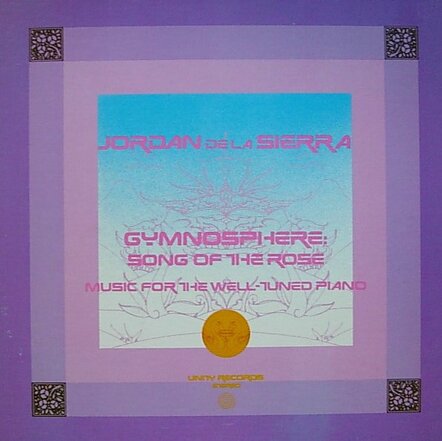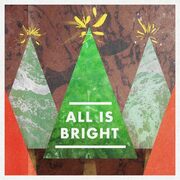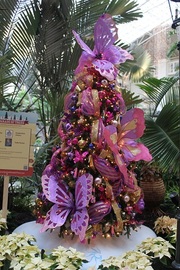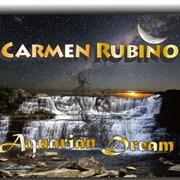New York, NY (Top40 Charts) In the world of experimental, explorational, ambient/new-age/neo-classical music, something very special has happened. One of the inspirational and influential "lost classics" has re-emerged. In 1976, multi-dimensional artist Jordan De La
Sierra sat at a specially-tuned piano and recorded Gymnosphere: Song of the Rose. The original vinyl album has been out-of-print for more than 30 years. Now the recording has been released for the first time on CD, digitally-remastered from the original tapes. The legend continues.
This historic music is finally available again - now as a two-CD set, as a double-vinyl-album and as digital downloads - thanks to the careful reissue by Numero Group, a specialty label based in Chicago. The package includes a 20-page booklet with extensive information about the project and its history as well as India-inspired drawings and De La Sierra's musings on "the tableau of space." More information about the project is available at numerogroup(dot)com.
There are several reasons this music is so coveted. The music itself is exceptional, emotion-stirring and timeless, although it also originally was considered cutting edge, ground-breaking and influential to other musicians (it was one of the first acoustic-ambient recordings). Remarkably, it sounds completely contemporary to this day. In addition, De La
Sierra was always a leader in the field of modern sonic-art, avant-garde, psycho-acoustic, new frontier music. He studied with (and became a good friend of) legendary minimalist musician Terry Riley, Indian classical singer and Kyhal master Pandit Pran Nath, forward-thinking teachers Robert Ashley and Bill Maraldo at the Center for Contemporary
Music at Mills College, La Monte Young, and tantri-sufi teachers H. Johari and Tariq Hamid. And, finally, Gymnosphere was co-produced by De La
Sierra with Stephen Hill, founder and creator of the popular international radio show Hearts of Space, who originally released the music on the esoteric, independent, but soon-legendary Unity Records label.
Before new age music even acquired that genre-name, De La
Sierra -- classically-trained musician, composer, poet, author, visual artist, philosopher, environmental designer, visionary and self-described "possibilist" -- was exploring cosmic concepts in the Northern California Bay Area. For this project he embarked on a journey of alternate tunings using a nine-foot Steinway D acoustic concert grand piano recorded with a little console reverb in a subterranean
Berkeley studio lit only by a single candle that De La
Sierra made from a twisted cotton wick and a jar of clarified butter. He also transformed the tiny 15-foot studio to give the feeling of an Eastern temple strewn with silks, gardenia flowers, open bottles of essential oils, a few gemstones, and a small piece of gold. After three days of late-night sessions, the tapes were taken to San Francisco's
Grace Cathedral and played back through speakers and recorded again to capture the remarkable and resounding reverberations available within those rock walls. Producer Hill mixed the original tapes with the Cathedral ones to create the final sound. The result was solo piano music as it had never been heard before (or since).
Gymnosphere: Song of the Rose, originally culled from five-and-a-half-hours of tapes, is comprised of four lengthy tunes -- "Music for Gymnastics" (24:17), "Temple of Aesthetic Action" (24:55), "Music for Devotional Pastimes" (27:13) and "Sphere of
Sublime Dances" (27:00). De La
Sierra said the music was meant for "softly arousing sleeping senses" and has called the project a "temple of aesthetic-action." The sounds have on occasion been aptly described as "interstellar space piano music" and "sensory engulfing."
De La
Sierra also says, "The search is for precise frequencies and the music between the notes. I feel this is a much more sensitive approach to the music than with amplified sounds.
Music comes from higher energies and as we open ourselves up to the music, then the time disappears."
De La
Sierra attributes the inspiration for this recording project to Terry Riley, one of the acknowledged minimalist music masters and innovators, who, along with La Monte Young, championed the idea of "pure sound with shape" - musical ideas created from notes in scales tuned to whole number ratios, a system of modal-tuning wherein all the notes that are sounded in a particular scale are notes that ring in harmony with one another. This approach to tuning magnifies the sympathetic resonance inherent in all naturally occurring soundwaves. These "well-tuned" principles differ greatly from the traditional "well-tempered" approach to tuning, a system wherein each octave is divided into twelve equal semitones. De La
Sierra subtitled his recording "Music for the well-tuned piano," a phrase used a decade later by La Monte Young in titling one of his albums.
In addition to the unusual tuning, the piano was played so that the notes are left to reverberate to the full extent of their potential, at varying lengths, to be bent by and shaped by De La Sierra's improvisations and textural sonic explorations.
Natural drones were achieved through the adept utilization of the piano's sustain and soft pedals. The subtly-shifting piano figures, myriad tone clusters and seductive repetitions create a mesmerizing, hypnotic and atmospheric thrill ride into far-off intergalactic dimensions and time warps seldom experienced by what De La
Sierra termed "fellow members and space colonizers here present in this, our local universe."
Raised in Central California, De La
Sierra became a choirmaster at church at age 15, and the next year was offered a record deal and went to Hollywood to record an album of his own material, Every Time It Rains. At 17, he gave his first solo classical vocal recital (singing in English, French, German and Italian) and earned a full scholarship to San Francisco's prestigious Conservatory of
Music where he majored in voice and composition while also studying ancient temple dancing from China, Japan and
India in his spare time. A few years later he was producing "environmental theater" shows where he performed original compositions such as "A Stitch of Light of
Fragrance and The
Music and The Sphere" and "Music in Waves and Poppies Dance the Light and Sound of Nature" surrounded by light sculptures (the concerts were broadcast on radio station KPFA).
During these years De La
Sierra studied and performed electronic music at Mills College, became a protégé of Terry Riley for three years, studied North Indian singing with Riley and their teacher Pandit Pran Nath for several years, and went to New York and traded ideas with La Monte Young and his wife, visual artist Marian Zazeela, as part of the avant-garde community there that included the renowned "Dream House." De La
Sierra published his first book of poetry, Songs By the Pools of Pavonine in 1974 and a book of his drawings, Views Into Self, in 1976, while writing further treatises on "aesthetic evolution" and "the "nonessentia principle" relating to space and sound. During the Eighties De La
Sierra played concerts regularly with his groups The Jemstone Band and New Symposium, and played on-stage and in the studio with new age artists such as Steve Kindler, Teja Bell, Rick Henderson,
Joaquin Lievano,
Dallas Smith and Bill Ryman. In the late Eighties De La
Sierra released an album,
Valentine 11, containing both vocal and instrumental original tunes.
For fans of spacey, experimental music, Gymnosphere: Song of the Rose has long been a highly-collectible touchstone, difficult to find, but passed along among the faithful as a cult artifact to be treasured. Finally, after decades of waiting and 37 years after it was recorded, this seminal new age music is available to the world once more, sounding better than ever.
"I want to acknowledge the human race in my music, help people shed their fears, and inspire them to express themselves in all ways because everyone has something to offer to the tribal community of the world," explains De La Sierra. "With Gymnosphere, it is my intention to share this offering of 'pure sound with shape' with all beings who live and breathe, expressing love through the grace of music as a form of spacial food."























